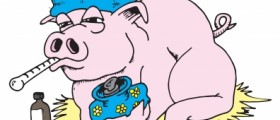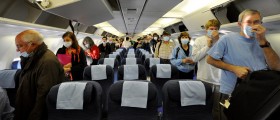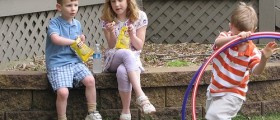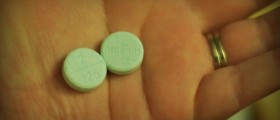
Recent studies show that more than a half of children taking Tamiflu to fight swine flu suffer some kind of side effects. Most commonly side effects include nausea, insomnia and nightmares, but as much as 20% of them had neuropsychiatric side effects like poor concentration, inability to think clearly, sleep problems and confusion.
Scientific studies
An online survey was carried out between April and May 2009. in London, after a great number of schools had to be closed because of the confirmed cases of swine flu. Three independent schools took part in this survey. Parents or guardians were given a website address with an anonymous questionnaire and they were asked to complete the questionnaire on behalf of their children.
Participants were selected differently so that they form three groups 4-11 years, 13-14 years and 11-13. Questionnaire asked a series of questions like whether the children took Tamiflu, for how long they took it, if they had the presence or absence of influenza like symptoms before taking the medicine, did they take any other medications with Tamiflu, and what other symptoms did they have after taking Tamiflu.
Results of the study
Questionnaires were emailed to 256 families and 103 of them (around 40%) responded. The most of those who responded were given Tamiflu for prophylaxis. 85 of them, or 89%, took the medicine. 45 out of 85 schoolchildren who took Tamiflu reported some sort of side effects. The most frequent complaints were about gastrointestinal symptoms (in 40% of children) and mild neuropsychiatric effects (in 18% of children) such as nightmares, poor concentration and sleep problems.
Summary of the study
The researchers concluded their study by confirming suspicions that children were responding badly to Tamiflu. However, the survey had a low response rate and there was no control group to compare against the children that took Tamiflu, so that the results have to be interpreted carefully. There are a couple of facts that need to be kept in mind:
Controlled trials of Tamiflu established that nausea occurs twice as often with the Tamiflu as with placebo. These results point out to the possibility that the actual rate of side effects may be lower than in this study.
The study demanded responses within less than 24 hours and this may have contributed to the low response rate. The 60% of people who didn’t respond to the questionnaire could possibly affect the results in a different manner.
Drawing conclusions from responses to a survey might have caused some factual errors. For example, it is possible that some of these toddlers in fact developed flu after the first case.

















Your thoughts on this
Loading...